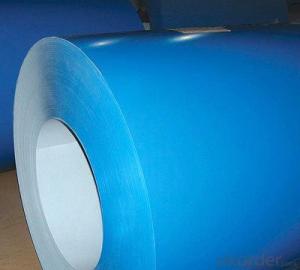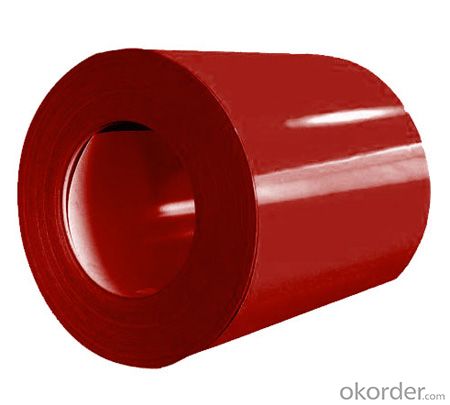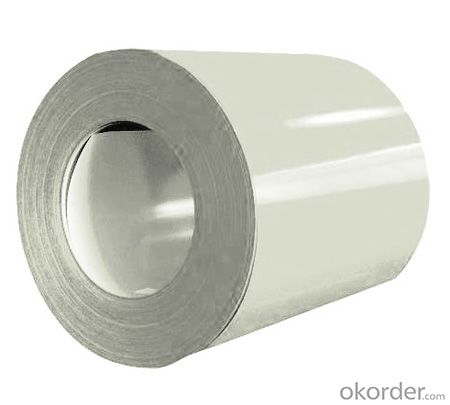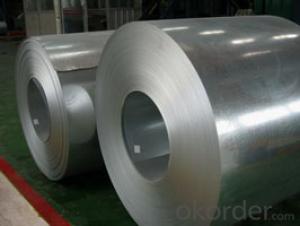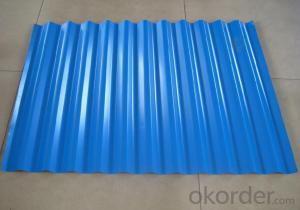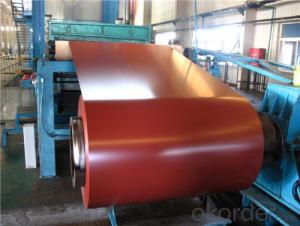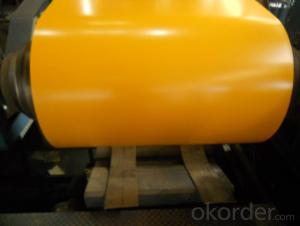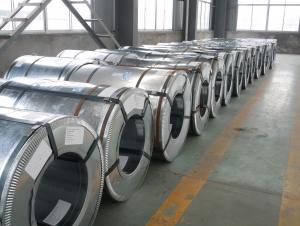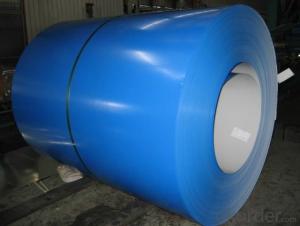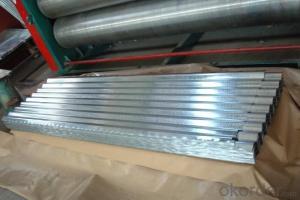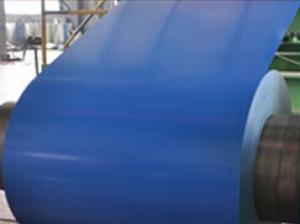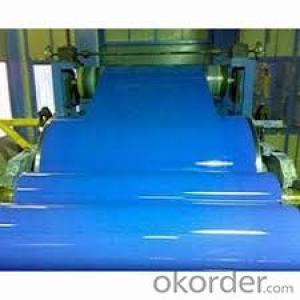Prepainted Aluzinc Steel Coil Qualified-CGLCC
- Loading Port:
- China main port
- Payment Terms:
- TT OR LC
- Min Order Qty:
- 50 m.t.
- Supply Capability:
- 10000 m.t./month
OKorder Service Pledge
OKorder Financial Service
You Might Also Like
Prepainted Aluzinc Steel Coil Qualified-CGLCC
1. Structure of Prepainted Galvanized steel Coil :
•Prepainted galvanized steel qualified with excellent decorative ,formability ,corrosion resistance ,coating adhesion ,can keep for a long time as well as maintain fresh color .For color coated steel sheet can obtain good economic benefit by steel belt wood ,efficient in construction and save energy ,prevent pollution etc. Which is an ideal material for manufacturing board.
2.Main Features of Prepainted Galvanized steel Coil:
• Excellent process capability
• Smooth and flat surface
• Workability, durability
• Excellent heat resistance performance
• High strength
• Good formability
• Good visual effect
3.Prepainted Galvanized steel Coil Images
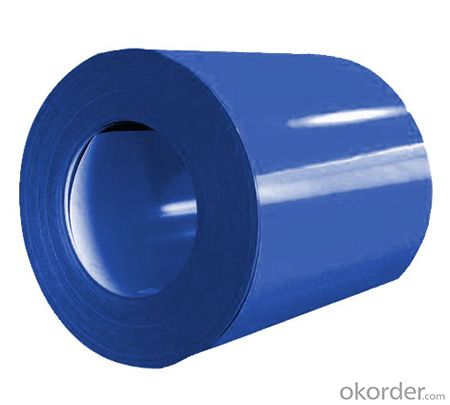
4.Prepainted Galvanized steel Coil Specification
Standard: ASTM, GB,JIS,JIS G3302 ASTM 755 EN10169
Grade: DX51D CGCC CS
Thickness: 0.18mm~1.2mm,
Width: 600-1250mm
Coil weight:3-12 MT
Coil ID:508/610mm
5.FAQ of Prepainted Galvanized steel Coi
We have organized several common questions for our clients,may help you sincerely:
1.How do you control your quality
We have established the international advanced quality management system,every link from raw material to final product we have strict quality test;We resolutely put an end to unqualified products flowing into the market. At the same time, we will provide necessary follow-up service assurance.
2.How long we will receive the goods ?
After receiving your deposit or workable lc ,our normal shipment date is 15-20days,and it takes around 28 days to reach your port of destination. But is up to different destination
3. What is your moq
Normally our moq is 25per size ,but it is up to different size
- Q: Iron too heavy for Ulysses but if there was any iron used id imagine it was steel. Can steel go deeper into sun than iron? Compare two bolts.. 1steel 1iron..is there a difference to what the steel can do?
- Steel is usually stronger than iron. But steel is, by definition, an alloy of iron and one or more other materials. There are thousands of different steel alloys. Be more specific.
- Q: What are the different types of coil edge trimming machines?
- In the market, one can find a variety of coil edge trimming machines. These machines are specifically designed for the purpose of trimming the edges of coils or rolls made from different materials like metal, paper, plastic, or fabric. Each machine type possesses unique features and capabilities to cater to specific trimming needs. 1. Manual Edge Trimmers: These machines require manual operation where an operator feeds the coil and trims the edges using a cutting tool or blade. Manual edge trimmers are suitable for trimming applications with low volumes and rely on the skill and precision of the operator. 2. Semi-automatic Edge Trimmers: These machines offer automated feeding mechanisms to assist in the coil feeding process. However, the operator still performs the trimming manually using a cutting tool. The feeding mechanism reduces manual effort and increases productivity. 3. Automatic Edge Trimmers: These fully automated machines require minimal operator intervention. Equipped with advanced sensors and controls, they ensure precise and consistent trimming of coil edges. Automatic edge trimmers can handle high volumes of coils and are often integrated into production lines for continuous trimming operations. 4. Rotary Blade Edge Trimmers: These machines utilize high-speed rotating blades to trim coil edges with precision. Commonly used for plastic or fabric coils, they provide clean and smooth cuts. 5. Guillotine Edge Trimmers: These machines employ a guillotine-like cutting mechanism to trim coil edges. The cutting blade moves vertically, resulting in straight and accurate cuts. Guillotine edge trimmers are suitable for trimming metal or paper coils. 6. Laser Edge Trimmers: These machines adopt laser technology to trim coil edges. The laser beam ensures clean and precise cuts, making them ideal for delicate or high-value materials. The choice of the appropriate coil edge trimming machine depends on the specific requirements of the application. Factors such as material type, coil dimensions, trimming precision, and production volume should be taken into consideration. Each machine type has its own advantages and limitations.
- Q: In construction, what types of stress require steel to be placed in footings?
- Steel is always added to concrete to handle local 'tension' stresses. (Sometimes to provide extra compression in 'pre-stressed' applications, but the steel is still in tension.) Steel would be added to the lower section of footings to stiffen them to 'bridge' local 'soft spots' in the substrate.
- Q: How are steel coils used in the production of food processing machinery?
- Steel coils are used in the production of food processing machinery to construct various components such as frames, supports, and structural elements. These coils are typically shaped, cut, and welded to create the required parts, ensuring durability and strength in the machinery.
- Q: What are the environmental benefits of using steel coils?
- There are several environmental benefits of using steel coils. Firstly, steel is a highly recyclable material, meaning that it can be reused multiple times without losing its properties. This reduces the demand for raw materials and minimizes waste. Additionally, steel coils have a long lifespan, making them durable and resistant to wear and tear. This reduces the need for frequent replacements, saving resources and reducing waste. Furthermore, steel is a highly energy-efficient material, both in its production and during its use. It requires less energy to manufacture steel coils compared to other materials, and its high strength-to-weight ratio allows for lighter structures, reducing energy consumption in transportation. Overall, the use of steel coils contributes to a more sustainable and eco-friendly approach in various industries.
- Q: I don't know why but I'm having a VERY difficult time finding the melting point of 1008 steel.
- 1. okorder 2. Input (melting point 1008 steel) as the search string 3. Check the links; the third one showed the answer in an MSDS
- Q: How are steel coils used in the shipbuilding industry?
- Steel coils are used in the shipbuilding industry for various purposes, including the construction of the ship's hull, decks, and other structural components. These coils are typically cut, shaped, and welded together to form the desired sections and structures of the ship. Additionally, steel coils are also used for the fabrication of equipment and machinery required for the ship's operation, such as engine components and piping systems. The high strength and durability of steel make it an ideal material for shipbuilding, ensuring the ships are capable of withstanding the harsh marine environment.
- Q: How are steel coils inspected for elongation using elongation testers?
- Steel coils are inspected for elongation using elongation testers by following a specific procedure. First, a representative sample is taken from the steel coil, which is then prepared for testing by cutting it into a specific size and shape. The sample is usually in the form of a flat strip. The prepared sample is then placed into the elongation tester, which consists of two clamps. One end of the sample is securely held in one clamp, while the other end is held in the other clamp. The clamps are designed to prevent any slippage during the testing process. Once the sample is properly clamped, the elongation tester applies a tensile force to the sample. This force gradually increases, causing the sample to elongate. As the sample elongates, the tester measures the change in length using a precision measuring instrument, such as a strain gauge or an extensometer. The elongation tester records the original length of the sample before the test and continuously measures the length as the force is applied. The elongation is calculated by subtracting the original length from the final length of the sample and then dividing it by the original length. This gives the percentage of elongation. The obtained elongation value is compared to the specified elongation requirements set by industry standards or customer specifications. If the elongation falls within the acceptable range, the steel coil is deemed to have passed the elongation test. If the elongation value exceeds the allowable limits, the steel coil may be rejected or undergo further investigation to determine the cause of elongation. Overall, the process of inspecting steel coils for elongation using elongation testers involves taking representative samples, clamping them securely, applying a tensile force, measuring the change in length, and calculating the percentage of elongation. This helps ensure the quality and mechanical properties of the steel coils, thereby meeting the desired standards and requirements.
- Q: Are steel coils affected by temperature changes?
- Yes, steel coils are indeed affected by temperature changes. Steel is known to expand and contract with temperature fluctuations. When exposed to high temperatures, steel coils expand, and when subjected to low temperatures, they contract. These thermal expansions and contractions can cause changes in the dimensions and shape of the steel coils, which can potentially affect their performance and functionality.
- Q: What are the different types of steel coil edges?
- The different types of steel coil edges include mill edge, sheared edge, slit edge, and deburred edge.
Send your message to us
Prepainted Aluzinc Steel Coil Qualified-CGLCC
- Loading Port:
- China main port
- Payment Terms:
- TT OR LC
- Min Order Qty:
- 50 m.t.
- Supply Capability:
- 10000 m.t./month
OKorder Service Pledge
OKorder Financial Service
Similar products
Hot products
Hot Searches
Related keywords
